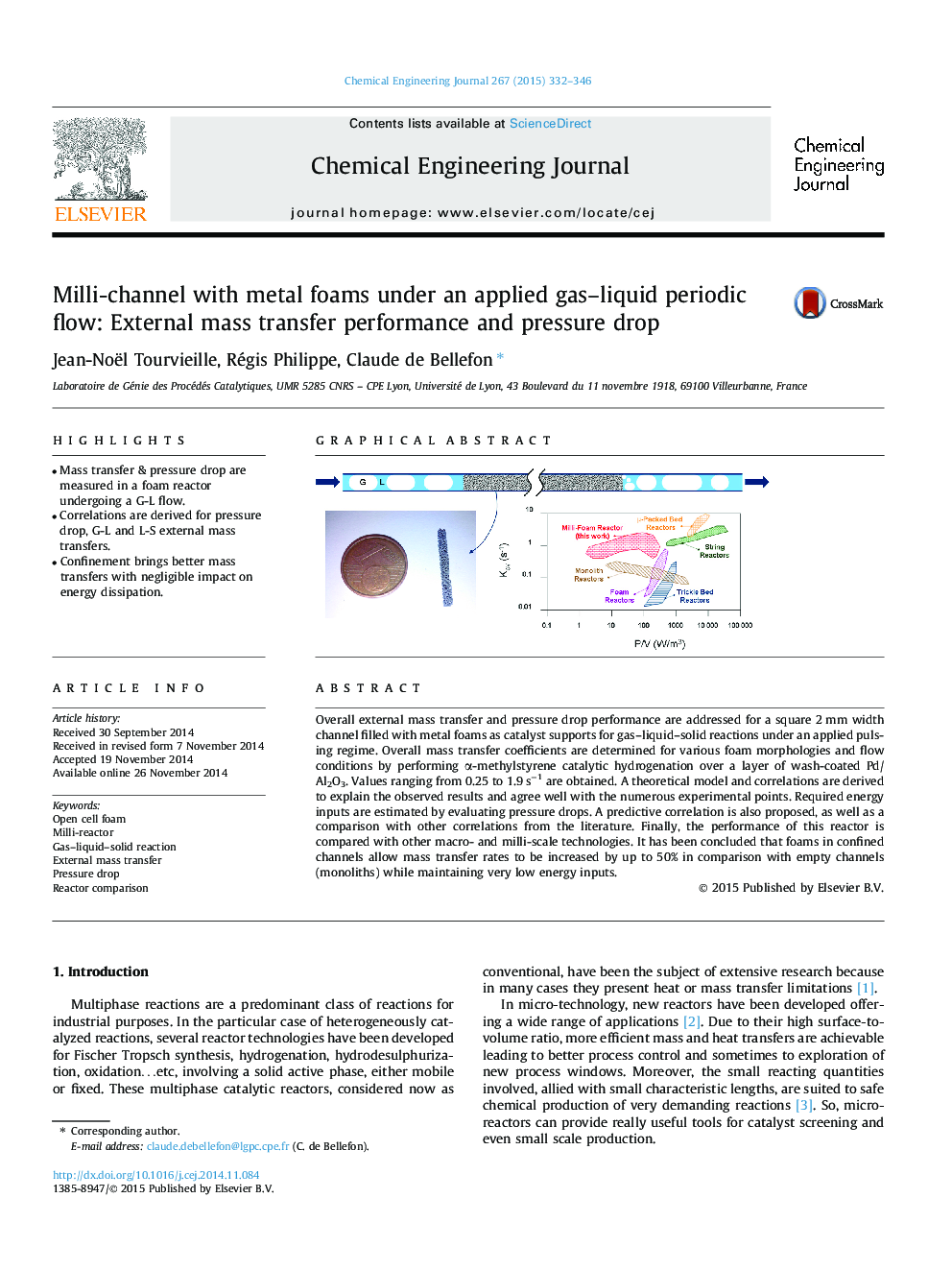| کد مقاله | کد نشریه | سال انتشار | مقاله انگلیسی | نسخه تمام متن |
|---|---|---|---|---|
| 146632 | 456374 | 2015 | 15 صفحه PDF | دانلود رایگان |
• Mass transfer & pressure drop are measured in a foam reactor undergoing a G-L flow.
• Correlations are derived for pressure drop, G-L and L-S external mass transfers.
• Confinement brings better mass transfers with negligible impact on energy dissipation.
Overall external mass transfer and pressure drop performance are addressed for a square 2 mm width channel filled with metal foams as catalyst supports for gas–liquid–solid reactions under an applied pulsing regime. Overall mass transfer coefficients are determined for various foam morphologies and flow conditions by performing α-methylstyrene catalytic hydrogenation over a layer of wash-coated Pd/Al2O3. Values ranging from 0.25 to 1.9 s−1 are obtained. A theoretical model and correlations are derived to explain the observed results and agree well with the numerous experimental points. Required energy inputs are estimated by evaluating pressure drops. A predictive correlation is also proposed, as well as a comparison with other correlations from the literature. Finally, the performance of this reactor is compared with other macro- and milli-scale technologies. It has been concluded that foams in confined channels allow mass transfer rates to be increased by up to 50% in comparison with empty channels (monoliths) while maintaining very low energy inputs.
Figure optionsDownload as PowerPoint slide
Journal: Chemical Engineering Journal - Volume 267, 1 May 2015, Pages 332–346
